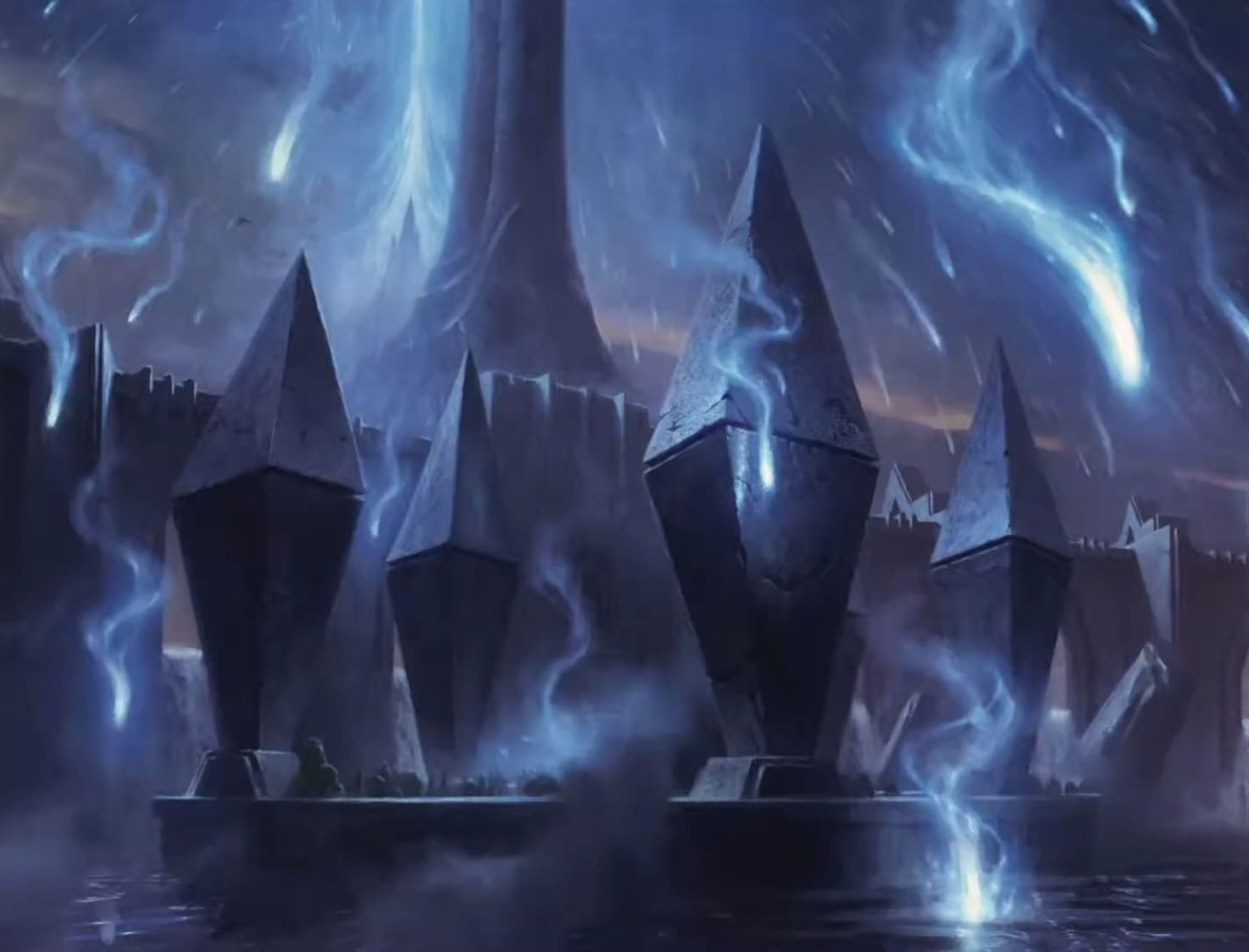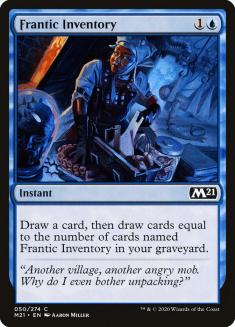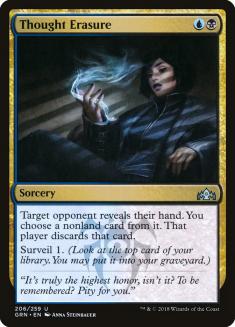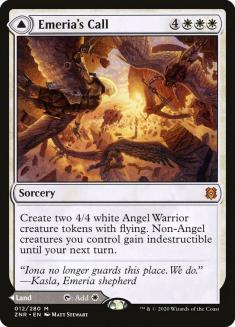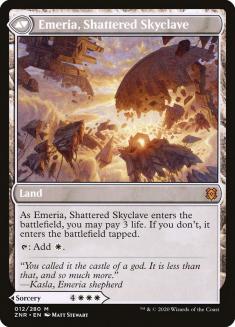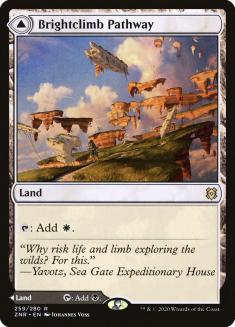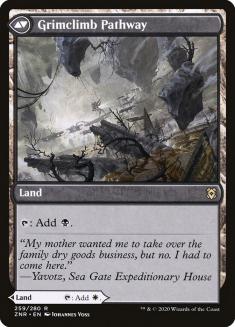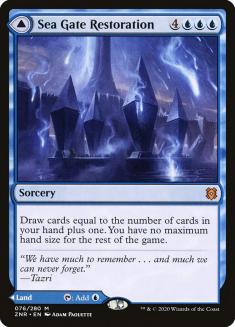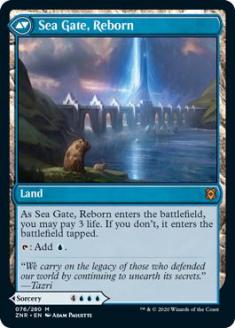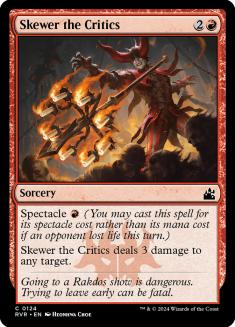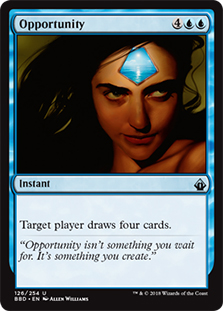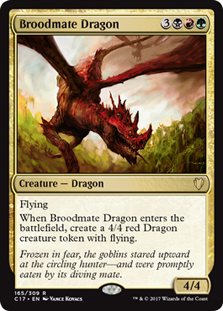In the modern era, I have been able to identify some control winners once they were previewed. Though control decks continue to evolve, the formula for victory stays the same. “Hitting land drops, surviving the early-game, deploying advantageous disruption, and slamming the door shut with some dope late-game win conditions” describes pure competitive bliss. The traditional way to build a control deck has changed some over the years, especially with the weakening of spells and cantrips, but Zendikar Rising gives this jaded old sorcerer hope.
Once modal double-faced cards (DFCs) were previewed, I knew good times were right around the corner. There was no way that control would be left out to dry. No matter how much mana they tack onto the spell side of one of these, it would be playable due to its very nature. Control decks must play a lot of land and use their card draw to search for additional land, more so than most other archetypes. The moment a land drop is missed, the game is effectively over in most scenarios.
The payoff cards in control require an on-time delivery, usually in the mid- and late-game. The disruption prior to those payoff cards is typically weak, hitting a creature with Glass Casket or snapping an Absorb off to stop a three-drop, even though a two-drop has already made it through. It’s a scrappy struggle in the early-game for control, but it all pays off when land drops are made and a Shatter the Sky or Elspeth Conquers Death arrives. Therefore Frantic Inventory will continue to be very good in control decks, even though the early uses appear mediocre.
Early card draw has been the lifeline for hitting land drops and we have accepted that norm. Players can get away with 26 or 27 lands because there are early spells that help the flow of land continue. It did not always work out, as land drops are not guaranteed from these effects. Before Frantic Inventory, control decks leaned heavily on Thought Erasure, which was even more of a stretch to get by. Ponder and Preordain were famously used to prevent the pain of missed land drops early and then serve as resource-finders late, but the power level was drastically dropped as spells grew weak. That struggle may be over with the arrival of modal DFCs from Zendikar Rising.
Emeria’s Call is the first control option in this cycle of modal DFCs that I saw. It provides a giant boon of threats/blockers in the late-game, sending a pair of 4/4 Angel tokens to the battlefield to protect the control player from harm. The secondary effect on it, giving non-Angel tokens indestructible for a turn, is close to worthless, but it does not detract from the strength of the original production. Any impact to the battlefield is noteworthy, even if it is a generally weaker effect of making creatures in a control deck.
The biggest draw for Emeria’s Call is that the land side, Emeria, Shattered Skyclave, enters the battlefield untapped. I hadn’t expected that, as the initial preview cards entered tapped. I was willing to accept the initial previews and start to include them in all my control decks, because that was good enough. Since we now know a few of them are untapped lands, the game has changed. The drawback is three damage, but that is a small price to pay with this much upside.
I’m used to shocklands doing a few points of damage when they’re absolutely needed or falling onto the battlefield tapped without drawback when the situation allowed it. That will be the play pattern with Emeria, Shattered Skyclave, except these lands will be best utilized in a two-color deck. The land competition will be fierce, with new two-color lands that have the same ability, like Brightclimb Pathway requiring four slots. Temples and the Castles will also fight for space, but luckily, I have a plan.
Due to the strength of this cycle of lands, I can see control decks easily adopting a 28- or 29-land strategy. Having a ton of land will no longer be a swift downfall in the late-game because of the powerful effect available at the end. Even though the spell sides are overcosted when compared to similar spells without a land side, they will be included in all archetypes moving forward.
We must change the way we evaluate cards. Magic players are too used to comparing current cards to those of old, or what effects should cost based on previous design. This is a flawed methodology that leaves many players on the wrong side of cardboard history. I see this happening already with this land cycle; some calling them all overrated and others coming down hard on the best card previewed yet.
Sea Gate Restoration is a bombshell of a card, for reasons that the haters will not see until play begins on Magic Arena. First off, it is an untapped blue land, making the upside monumental, regardless of the effect on the other side. Emeria’s Call may be a slightly more diverse effect, but the fact that it taps for white and not blue makes Sea Gate Restoration a superior card.
Control decks will always be blue-based for as long as I am around, putting a heavy requirement on having double-blue by Turn 3. Jace, Mirror Mage and Teferi, Master of Time have already laid the foundation for our manabase at the beginning of the season. Acknowledging that additional white sources, on top of Castle Ardenvale and Plains for The Birth of Meletis, will be a strain on deck development is the first step for the skeptical. The second step is to examine the effect rationally and outside of the parameters of a typical control card.
Here you see my Tweet of excitement, proclaiming that Sea Gate Restoration is better than Emeria’s Call. I never said Emeria’s Call is bad, but it is much worse than Sea Gate Restoration is in the control role. Blue sources of mana are freebies and get tossed into the pool with relative ease. That side being ignored, most notable players are laser-focused on the spell side. The response to my Tweet by Kanister says it all.
Kanister was not the only pro who heavily disagreed with my brief assessment. Ari Lax, Ben Weitz, and Andrew Baeckstrom also entered the arena to voice their disagreement. In typical veteran fashion, most criticisms from them were sourced from older examples, worse-case scenarios, and topdecks. In the aftermath, Zach Allen and I chatted in direct messages, where we acknowledged the narrow scope in which this card has been analyzed. Sea Gate Restoration arrives as an untapped blue land nine out of ten times, yet can blow the lid off an attrition matchup the moment it is cast.
Sea Gate Restoration costs seven mana, like its competitor, and draws some cards. Kanister criticized the effect as a “seven-mana Opt,” joining the crowd with their initial analysis. For it to be as he described, the control player will have to be empty-handed and topdeck a Sea Gate Restoration. This scenario will be absurdly rare, making the premise of the criticism a bit silly. Sea Gate, Reborn is not legendary, allowing us to play the three to four copies that each control deck will call for. This provides an additional layer to the late-game play pattern, knowing that this card boom will be available in many scenarios starting on Turn 7.
The first play pattern is obvious, holding a few riffraff spells unless they need to be cast for survival. Holding cards in hand used to be a normal part of the game, providing some bluff equity at the very least. This has died down some with the evolution of the game itself. The permanents are too powerful and require the player to “go for it” more often than in the past. There is too much downside in playing around disruption if it affects the ability for a deck to curve out. Control will not be incentivized to hold excess lands and low-impact spells for the bluff and the big Sea Gate Restoration payoff.
Another play pattern is the rush to Turn 7, using a few powerful removal and disruption spells prior, to land the biggest payday possible. Without a maximum hand size, hitting a Sea Gate Restoration with five cards in hand will feel fantastic. There are very few things more satisfying than drawing cards in Magic, especially when there is an option to hit land drops instead.
I stand by my initial assessment on Twitter. Sea Gate Restoration is a much better card than Emeria’s Call, but both are very good. The comparison that Ari made to a “Broodmate Dragon Standard” compared to an “Opportunity Standard” does not fly, nor does the seven-mana Opt jab from Kanister. Card strength analysis from era comparisons is flawed and worse-case scenario highlights are lazy.
Sea Gate Restoration will draw a healthy number of cards, maybe not what it is worth for seven mana, but more impactful than a couple of creatures. Cards drawn from the control side lead to sweepers, planeswalker removal, countermagic, and sturdy win conditions. Spinning the wheel to hit some on that list is what control is all about, not producing a few targets for the dead removal the opponent has in hand. As a reminder to close out, it taps for blue, making it the clear victor in the best control land (so far) from Zendikar Rising.
Time will tell if I was correct, but I like my chances. Shortly after rotation and the arrival of Sea Gate Restoration, we will see players, even the staunchest critics, using it to fill their hands up or hitting an untapped blue land on the road to victory.

